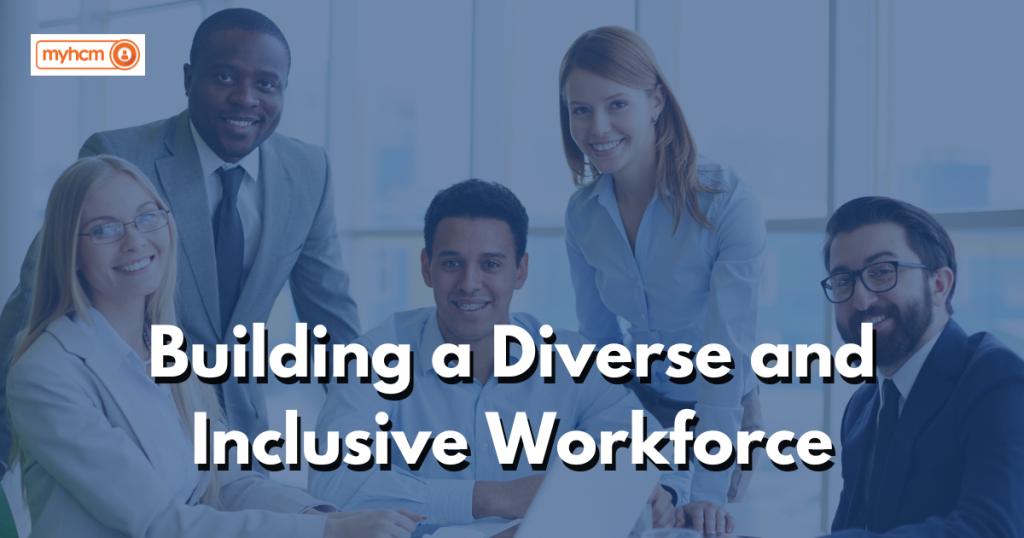In today’s dynamic work environment, building a diverse and inclusive workforce is more than just a trend; it’s essential for business success. Diverse teams bring varied perspectives, foster innovation, and improve problem-solving. As such, it’s crucial for HR professionals to focus on strategies that promote inclusivity and embrace diversity.
Importance of building a diverse and inclusive workforce
To begin with, to build a diverse and inclusive workforce, it’s important to first understand why diversity matters. Specifically, diversity in the workplace includes differences in race, gender, age, sexual orientation, and more. As a result, an inclusive workforce benefits from these differences, leading to increased creativity and better decision-making. Moreover, companies that prioritize diversity often see higher employee satisfaction and better performance outcomes.
Create a Comprehensive Diverse and Inclusive Policy
First and foremost, to build a diverse and inclusive workforce, it’s important to first understand why diversity matters. Furthermore, diversity in the workplace includes differences in race, gender, age, sexual orientation, and more. As a result, an inclusive workforce benefits from these differences, leading to increased creativity and better decision-making. Consequently, companies that prioritize diversity often see higher employee satisfaction and better performance outcomes.
Implement Bias-Free Recruitment Practices
Bias in recruitment can hinder the creation of a diverse and inclusive workforce. Implement strategies to minimize unconscious bias during hiring. Use structured interviews and diverse hiring panels to ensure fairness. Additionally, make job descriptions inclusive by using gender-neutral language and highlighting your commitment to diversity.
Promote Inclusive Training and Development
First and foremost, training and development programs should include content on diversity and inclusion. Additionally, offer workshops and training sessions that address unconscious bias, cultural competence, and inclusive leadership. By doing so, this will help employees understand the importance of diversity and learn how to contribute to an inclusive work environment.
Foster an Inclusive Company Culture
First and foremost, creating an inclusive company culture is crucial for retaining a diverse workforce. Moreover, encourage open communication and create platforms where employees can share their experiences and feedback. Additionally, recognize and celebrate diverse cultural events and achievements. Ultimately, an inclusive culture makes all employees feel valued and respected.
Measure and Monitor Progress
To ensure the effectiveness of your diversity and inclusion efforts, it’s essential to measure and monitor progress. Set metrics to track the representation of different groups within the organization. Use surveys and feedback tools to assess employee perceptions of inclusivity. Regularly review these metrics to identify areas for improvement.
Address and Prevent Discrimination
Addressing and preventing discrimination is vital for maintaining a diverse and inclusive workforce. Implement clear anti-discrimination policies and procedures. Provide resources and support for employees who experience discrimination. Ensure there are mechanisms in place for reporting and resolving issues promptly and fairly.
Encourage Employee Resource Groups
Employee Resource Groups (ERGs) can play a significant role in building a diverse and inclusive workforce. These groups provide support, networking opportunities, and a platform for underrepresented employees. Encourage the formation of ERGs and provide them with resources to help them thrive.
Promote Work-Life Balance and Flexibility
A diverse and inclusive workforce thrives in an environment that promotes work-life balance and flexibility. Offer flexible work arrangements, such as remote work options and adjustable hours. Support employees in balancing their professional and personal lives, which can enhance job satisfaction and productivity.
Lead by Example
Leadership commitment is crucial in building a diverse and inclusive workforce. Leaders should model inclusive behavior and actively participate in diversity initiatives. Their actions set the tone for the entire organization. When leaders demonstrate a genuine commitment to diversity, it inspires employees to follow suit.
Engage in Community Outreach
Engaging in community outreach can help attract diverse talent and show your commitment to inclusion. Partner with organizations that focus on diversity and support community initiatives. Participate in events and programs that promote diversity and inclusivity in the wider community.
Stay Informed on Best Practices
Diversity and inclusion are evolving fields. Stay informed about best practices and emerging trends. Attend industry conferences, read relevant publications, and network with other HR professionals. Continuous learning helps ensure that your strategies remain effective and relevant.
Conclusion
Moreover, building a diverse and inclusive workforce requires intentional efforts and a commitment to continuous improvement. By implementing these HR tips, organizations can therefore create a work environment that celebrates diversity and fosters inclusivity The benefits of a diverse workforce are clear—enhanced creativity, better problem-solving, and improved overall performance. So, start today to build a workforce that truly reflects and values diversity.
